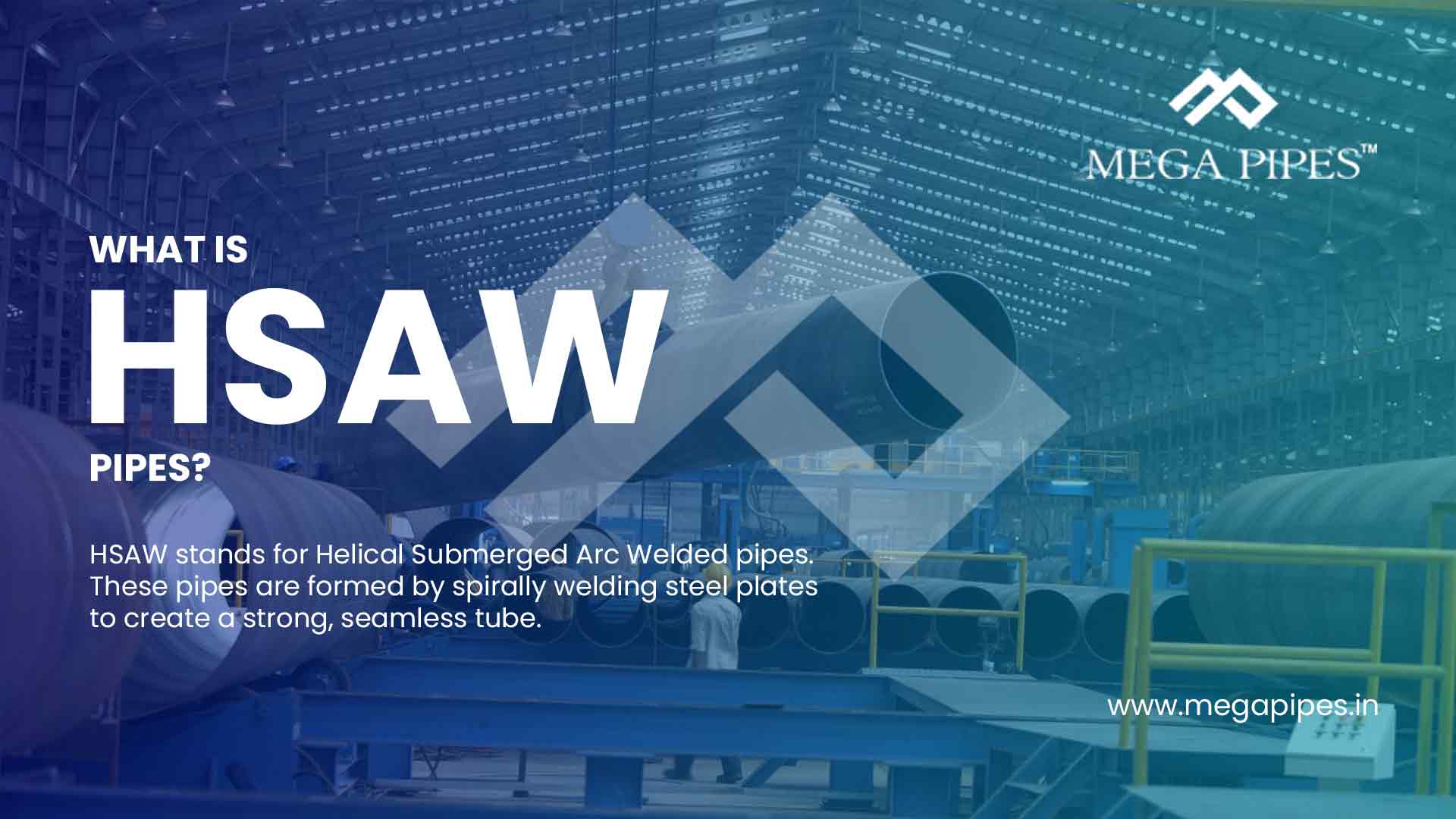Understanding HSAW Pipes: Everything You Need to Know
An introduction to HSAW Pipes
HSAW stands for Helical Submerged Arc Welded, which describes both the manufacturing method and the distinctive spiral weld pattern that characterizes these pipes. Unlike pipes with straight longitudinal welds, HSAW pipes feature a continuous helical (spiral) weld that runs along the entire length of the pipe. This unique construction method offers several advantages that we'll explore throughout this guide.
The basic structure of an HSAW pipe consists of a steel strip or plate that has been formed into a continuous spiral shape and welded along the seam. The resulting pipe features the distinctive spiral weld pattern that gives it its name and contributes to its structural characteristics. The submerged arc welding process, which occurs beneath a layer of flux material, ensures a strong, consistent weld that can withstand significant pressure and stress.
The manufacturing process of HSAW Pipes
The key steps in making HSAW pipes include:
Steel Plate Preparation – Selecting high-quality steel plates.
Spiral Forming – Rolling plates into a cylindrical structure.
Submerged Arc Welding – Using high-precision welding techniques.
Inspection & Testing – Ensuring quality and compliance.
Key Features of HSAW Pipes
High structural strength
Large diameter (up to 3,000mm)
Customizable length
Strong weld integrity
Compatible with various coatings

Applications of HSAW Pipes
HSAW pipes are used in oil and gas, water transmission, agriculture, and structural engineering. Their flexibility and reliability make them ideal for large-scale infrastructure projects across continents.
Quality Testing and Standards
Each HSAW pipe is tested for hydrostatic pressure, ultrasonic flaws, and weld consistency. At Mega Pipes, we adhere to standards like API 5L and ISO 3183, ensuring our pipes meet international requirements.
Advantages of HSAW Pipes
HSAW pipes offer several significant advantages that have contributed to their widespread adoption in various infrastructure projects around the world. Understanding these benefits helps explain why they often represent the preferred choice for many applications.
Cost-effectiveness stands as perhaps the most compelling advantage of HSAW pipes. The manufacturing process allows for the efficient use of steel coil rather than plate, typically resulting in lower material costs compared to longitudinally welded alternatives. Additionally, the ability to produce pipes of various diameters from the same width of steel coil provides manufacturing flexibility that can translate to cost savings, particularly for projects requiring multiple pipe sizes.
Production efficiency represents another key advantage. The high-volume production capability at Mega Pipes helps meet the demands of large infrastructure projects and can contribute to shorter lead times compared to other pipe types. Furthermore, the continuous nature of the spiral forming process lends itself well to automation and consistent quality control.
Material optimization occurs through the helical forming process, which allows manufacturers to produce pipes of various diameters from the same width of steel coil by simply adjusting the forming angle. This flexibility reduces material waste and inventory requirements, contributing to overall cost efficiency. Additionally, the spiral forming process can accommodate a wide range of diameter-to-thickness ratios, providing engineers with greater design flexibility.
Structural integrity benefits from the helical weld pattern, which can distribute stresses more evenly around the pipe circumference compared to longitudinal welds in certain applications. This characteristic can be particularly advantageous in applications involving bending stresses or external loads. Moreover, the double submerged arc welding process typically employed in HSAW manufacturing ensures complete penetration and fusion, resulting in high-quality welds with excellent mechanical properties.
Comparison with Other Pipe Types
To fully appreciate the role of HSAW pipes in the industrial landscape, it's helpful to understand how they compare with other common pipe types, particularly LSAW (Longitudinal Submerged Arc Welded) and ERW (Electric Resistance Welded) pipes.
HSAW pipes differ from LSAW pipes primarily in their weld configuration and manufacturing process. While HSAW pipes feature a spiral weld created from steel coil, LSAW pipes have a single longitudinal weld running the length of the pipe, produced from steel plate. LSAW pipes typically achieve higher pressure ratings for the same diameter and wall thickness, making them preferred for high-pressure applications. However, they generally cost more due to the plate-based manufacturing process and have more limited production capacity.
Compared to ERW pipes, which use electric resistance welding to join the longitudinal seam, HSAW pipes can achieve much larger diameters. ERW pipes typically max out around 24 inches (610mm), while HSAW pipes can exceed 100 inches (2540mm). Additionally, the submerged arc welding process used in HSAW manufacturing generally produces welds with better mechanical properties than ERW for demanding applications. However, ERW pipes often provide cost advantages for smaller diameters and can achieve tighter dimensional tolerances.
When choosing between these pipe types, several factors come into play. HSAW pipes typically represent the most economical choice for large-diameter, moderate-pressure applications such as water transmission or gas distribution.
Why Choose HSAW?
From low-maintenance needs to high-pressure environments, HSAW pipes offer unmatched performance. They are economical for long-distance transport and are preferred for their long service life.
Conclusion
HSAW pipes represent a remarkable engineering solution that balances cost-effectiveness, manufacturing efficiency, and performance capabilities. Their distinctive spiral weld pattern and versatile production process have made them a mainstay in infrastructure projects worldwide, particularly for large-diameter applications in water, oil, and gas transmission.
Looking toward the future, ongoing advancements in steel metallurgy, welding technology, and coating systems continue to enhance the capabilities and performance of HSAW pipes. These developments promise to extend their application range and service life while potentially reducing costs and environmental impact. As global infrastructure needs continue to grow, particularly in developing regions, the importance of cost-effective, reliable piping solutions like HSAW pipes will only increase.


